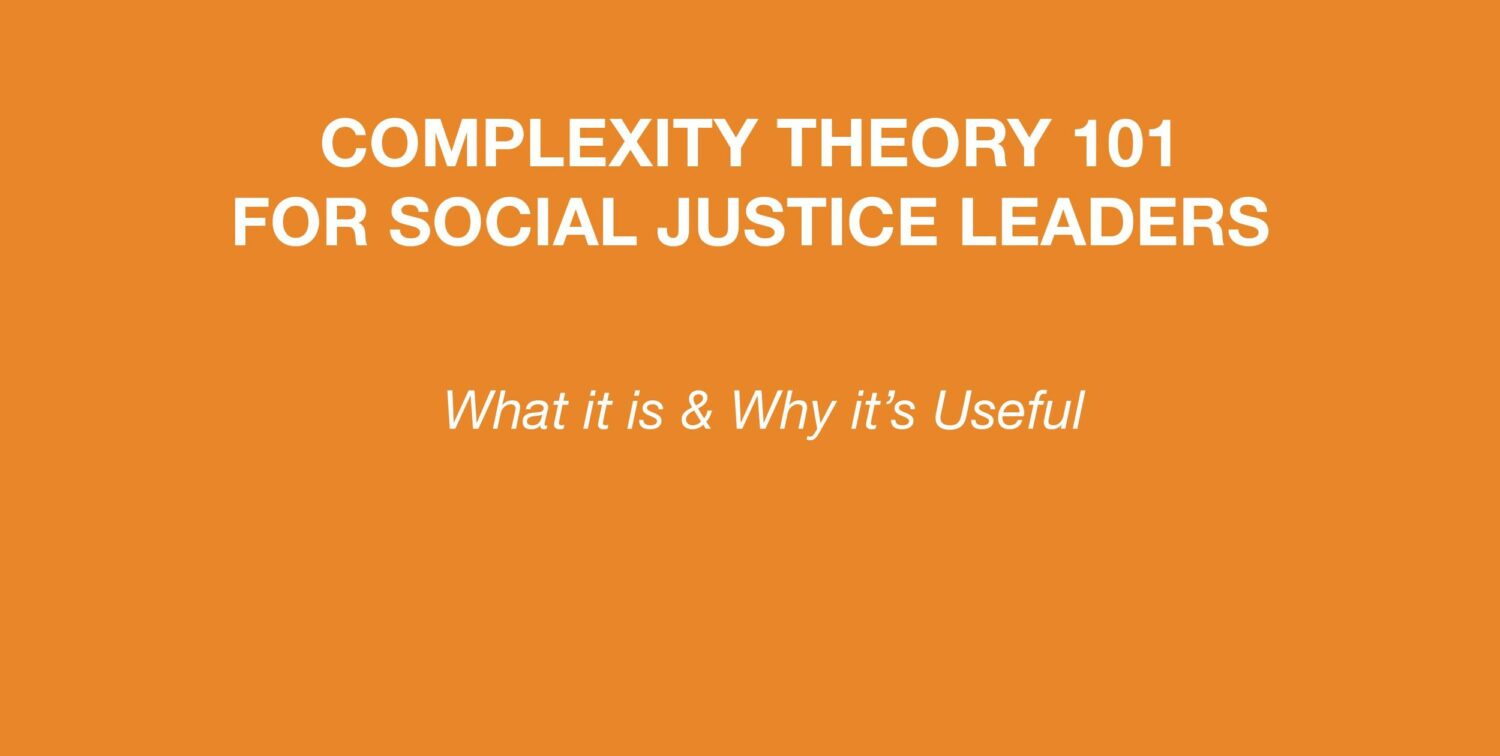“Complexity theory provides a model for understanding experiences and tensions. It helps me think through how to operate at a different level when the change we’re after is transformative.”
The last decade has seen a significant shift towards a more complex environment. Policy change, especially at the federal and international levels, is very hard to achieve. There is greater understanding that progressive issues are interdependent and we can’t create change by fighting in issue silos.
Today’s justice leaders feel this shift every day as the typical levers and buttons for creating change no longer work in many situations. Now we have to think about creating change, whether at the individual, organizational, network, and movement levels, in ways that welcome innovation, experimentation, adaptation, and emergent practice.
Through our work with partners, our learning programs such as the Network Leadership Innovation Lab, and our research, we are learning how to apply a complexity lens to the social justice context. Over the next few months, we will share with you our Tools for Leading in Complexity series – it is a gathering of tools that we have found useful in our work with clients and partners trying to advance justice in complexity.
First up is Complexity 101 for Social Justice Leaders: What it is and Why it’s Useful. We start here because we have found it helpful to unpack what we actually mean by complexity as we dive into this work. Gaining a better understanding of complexity theory and how it can be applied to your own context can help you understand more about leadership styles, organizational dynamics, and how networks function. We hope this set of slides will help you explore complexity theory and how it might influence your work. Let us know what you think and how complexity affects your work!





